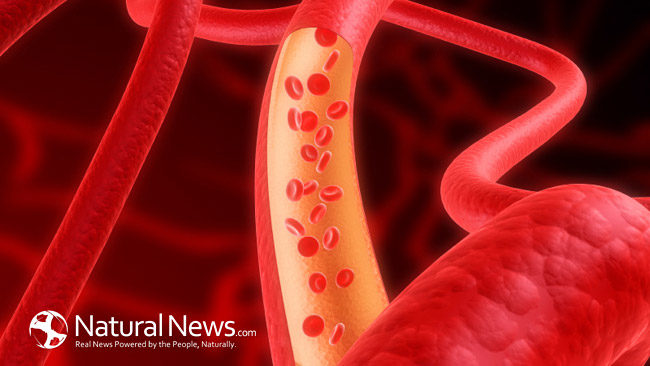WHAT IS INTERNAL BLEEDING?
While it is widely understood that internal bleeding is invisible from outside of the body, the medical personnel may use more precisely term to describe the symptoms as well as the location of the body where the bleeding is found. The internal bleeding may happen inside the tissue, the head, spinal canal or even abdomen. Examples of other possible parts of bleeding are eyes and tissues that lie in the heart, muscles, and joints.
While external bleeding is easy to recognize due to damages caused by laceration, puncture, and abrasion, blood will stream out of the body, internal bleeding is much harder to diagnose. It might be not evident after quite some time after it happened, and the symptoms only appear when there is severe blood loss or the blood clot is big enough to press the organ and cause pain and redness or even improper functions of the body.
WHAT ARE THE CAUSES OF INTERNAL BLEEDING?
Internal bleeding is caused by artery damage or escapement of blood from the circulatory system and gathering inside the body. The amount of bleeding depends on the damage to the organ, the blood vessel, however, will repair it. The mechanism is available in both blood clotting system and the capability of the blood vessel to enter spasm to reduce the blood stream to the injured area.
Those who take blood – thinning or anti – clotting medication obtain a higher chance of internal bleeding compared to those who do not. They might suffer from significant blood loss even the injury or illness us tiny.
Therefore, causes of internal bleeding may vary, however; those are considered as main causations of this matter:
- Damage to the blood vessel that the body mechanism cannot self – recover
- Lack of clotting factors which are the key roles in repairing the damaged cells
- Medication which is taken to block abnormal clotting.
And it is widely believed that the great pressure compressed on the body such as falling from a certain height or car accidents which can damage the organ of the body without cutting your skin or lacerate. Thus, it is more difficult to identify the internal bleeding. See more home remedies for hematoma: How to Treat a Hematoma
WHAT ARE THE SYMPTOMS OF THE INTERNAL BLEEDING?
The symptoms of internal bleeding are relying upon the location, the amount and the types of the bleeding. Blood outer of the blood vessel or heart line can cause irritating sensation followed by inflammatory and pain.
Intracranial bleeding resulted from trauma or a leaking aneurysm regular lead to pain and altered mental function.
Intra-abdominal bleeding might be invisible and only diagnosed with pain. However if the patient is suffered from significant blood loss, the symptoms are more evident such as weakness, headache, breath’s shortness and any other symptoms like shock or significant reduction of blood pressure.
Blood recognized in the urine might be due to blood loss within the urinary system, from the kidney to bladder.
HOW TO TREAT INTERNAL BLEEDING?
Internal bleeding is not meant to be treated at home unless the patient has been checked and released from the medical facility. Self – care includes rest, relaxation, and prevention of re –bleeding or further injuries. If there is a significant internal bleeding causing a huge amount of blood loss, emergency medical services should be sought for immediately. While waiting for the ambulance, the patient should be lay down flat with the elevated legs. Unless the patient suffers from trauma, and there is a high chance of neck or spine injury, the patient must not be moved till being diagnosed by emergency and authorized personnel. See how to strengthen weak legs.
Initial treatment for internal bleeding contains immobilizing the patient, means the ABCs of resuscitation should be the most priority for the care producer.
A: Airway
Patients with lower mental situation may not be conscious enough to respire properly.
B: Breathing
Even though the airway is unclogged, the lungs might still not efficiently function properly and help should be delivered to the patient thus oxygen can be transmitted from the lungs to the blood stream.
C: Circulation
Blood is necessary to regulate to all the cells to bring oxygen and nutrients and discharge wastes and debris products. Medication is delivered with that aim of retaining the blood pressure and the circulation. Requirements of often intravenous fluids and sometimes the blood transfusion are necessary as well. Several patients may desire prompt transfusions with universal donor blood (for example type O– blood).
In conclusion, specific treatment may be relying on the root of bleeding, the location as well as the quantity of bleeding. The popular aim of those is to find the source of bleeding and stop it as soon as possible. At the same time, remedies should be delivered directly to repair or secure the damage caused by blood loss. Once the situation has been improved, treatment will be aimed to correct the hidden cause of the blood loss and to prevent further injuries in the future.
Resources:
https://authorityremedies.com/how-to-stop-internal-bleeding/
https://www.ncbi.nlm.nih.gov/pubmed/27930374
https://www.ncbi.nlm.nih.gov/pubmed/27567572
More by Jenny Heth:
- All About The Health Benefits Of Watercress
- 8 Amazing Health Benefits Of Cocoa Butter You Must Know
- Lavender – More than Herb of Love
- Are you treating a hematoma the right way?
- Opps! I have an avocado, and it has multiple functions
- Treat Kidney Infection With These Home Remedies
- Home Remedies For Dry Socket
- Top 8 Home Remedies For Bacterial Vaginosis
- Top 7 Amazing Home Remedies Of Blepharitis





